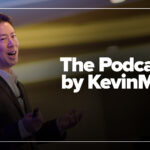An excerpt from Crave: The Hidden Biology of Addiction and Cancer.
Prevention, as commonly understood, has struggled to match the evolving reality of cancer. The traditional model rests on two main ideas: Reducing exposure to known carcinogens and detecting abnormalities as early as possible. Avoid tobacco, wear sunscreen, and get screened. These recommendations remain useful, yet they are incomplete. They overlook the terrain in which disease develops. They address threats while missing the underlying conditions.
Cancer involves more than external exposure. It arises from internal conditions. Disease takes hold when the body’s environment shifts toward permissiveness, inflammation becomes persistent, immune surveillance weakens, insulin signaling grows erratic, and repair mechanisms fall behind damage. These issues arise collectively, resulting from behavioral, emotional, and structural patterns repeated consistently over time.
Such patterns frequently reflect craving in a broad biological sense, as a drive for relief, stimulation, or escape in ways that undermine systems responsible for long-term repair. They include seeking comfort instead of rest, distraction instead of stillness, sugar instead of nourishment, and validation instead of connection. Each repetition prompts the body to adapt, responding directly to these inputs. When these inputs consistently reflect depletion, the resulting biology mirrors that depletion.
The new prevention begins here. It starts by recognizing the internal environment as an active participant in disease development, responding dynamically to rhythm, rest, and relationships. It reflects how we eat, move, think, feel, and recover. The goal is coherence rather than perfection. A body experiencing stability responds differently to challenges compared with one conditioned by chaos.
This reframing reshapes our approach fundamentally. It influences what we teach, what we measure, and what we prioritize in clinics, research, and communities. It requires shifting focus from isolated behaviors to sustained patterns, from singular risk factors to cumulative biological states, and from pathology to capacity. The goal of prevention expands beyond eliminating disease to cultivating an internal environment in which disease struggles to take hold.
Information alone rarely creates this environment. Most people already know the basics about diet, exercise, sleep, and stress. The critical gap is support. Many environments actively hinder the implementation of healthy behaviors by extracting continuous effort, amplifying distractions, and normalizing depletion. Even highly motivated individuals struggle to maintain internal regulation under these conditions.
Effective prevention extends beyond individual responsibility into structural change. It involves questioning who profits from addiction, who designs food systems, who controls work environments, and who funds public health initiatives. Biology adapts as readily to power structures as it does to diet or sleep patterns. A person situated in a system structured around craving will inevitably reflect that system in their physiology, mood, and long-term health outcomes.
This principle is grounded in physiology rather than theory. Bodies adapt to living in food deserts, working prolonged night shifts, and experiencing chronic stressors like racism, poverty, or social threat. Yet these adaptations often come with significant health costs. The immune system remains chronically inflamed, the nervous system perpetually aroused, and digestion persistently disrupted. Over time, these adaptations shift into pathology. Even after the original stressor subsides, the body’s internal response continues to reverberate.
To prevent cancer, we must address the echo. We must strengthen the systems that can quiet it. That means looking beyond carcinogens to craving itself: Understanding how it arises, how it is reinforced, and how it can be replaced by rhythms the body recognizes. This is where the new prevention begins.
For prevention to reflect current biological knowledge, the systems delivering care must evolve. Clinics need to shift from treating disease after it emerges to detecting imbalances earlier. This approach requires more than new diagnostics. It requires a different kind of listening.
Most visits to health care providers still focus primarily on symptoms such as fatigue, weight gain, pain, or disrupted sleep. These symptoms typically receive management-oriented treatments rather than being viewed as signals of a nervous system losing its rhythm. Providers commonly ask limited questions about pain, medications, or smoking status. Rarely do visits allow for questions about diet, sleep quality, social support, or daily experience.
These omissions reflect a health care system structured around acute care rather than long-term prevention. Chronic diseases, including cancer, develop slowly, over many years, through subtle shifts in immune surveillance, hormonal regulation, and cellular signaling. These biological changes often precede overt symptoms by decades. Effective prevention must begin well before disease surfaces.
To accomplish this, health care must invest in new metrics. Instead of waiting for blood sugar levels to indicate diabetes, providers should track insulin resistance, meal timing, and circadian alignment. Rather than screening for depression after significant impairment occurs, health care should monitor sleep quality, inflammatory markers, and stress reactivity. Body weight alone is insufficient; assessments should include muscle mass, inflammation levels, and metabolic flexibility.
Scientific evidence already supports this approach. Early markers of dysregulation are measurable, responsive to intervention, and predictive of long-term outcomes. Yet these markers remain underprioritized because they fall outside current billing codes and time constraints. Public health leadership is essential here, not simply in educating individuals, but in restructuring the incentives shaping care.
Research priorities also need to evolve. Current models emphasize pharmaceutical solutions, often overlooking environmental and behavioral influences. Although these efforts have generated valuable treatments, they reinforce a view of disease as something externally imposed rather than internally cultivated by ongoing interactions with the environment. Comprehensive prevention requires investing in research about how food, movement, social connection, and sleep influence biology over time. It means measuring factors that support healing alongside those that cause harm.
Some institutions have started moving in this direction. Research on time-restricted eating, sleep hygiene, social cohesion, and environmental stress has demonstrated that these elements are directly linked to gene expression, inflammation, and immune responses. They shape the internal environment that either promotes or suppresses cancer growth. These insights must move from academic discussions into policy decisions, health care practice, and broader cultural understanding.
Raphael E. Cuomo is a scientist and author of Crave: The Hidden Biology of Addiction and Cancer.


















![Rebuilding the backbone of health care [PODCAST]](https://kevinmd.com/wp-content/uploads/Design-3-190x100.jpg)
